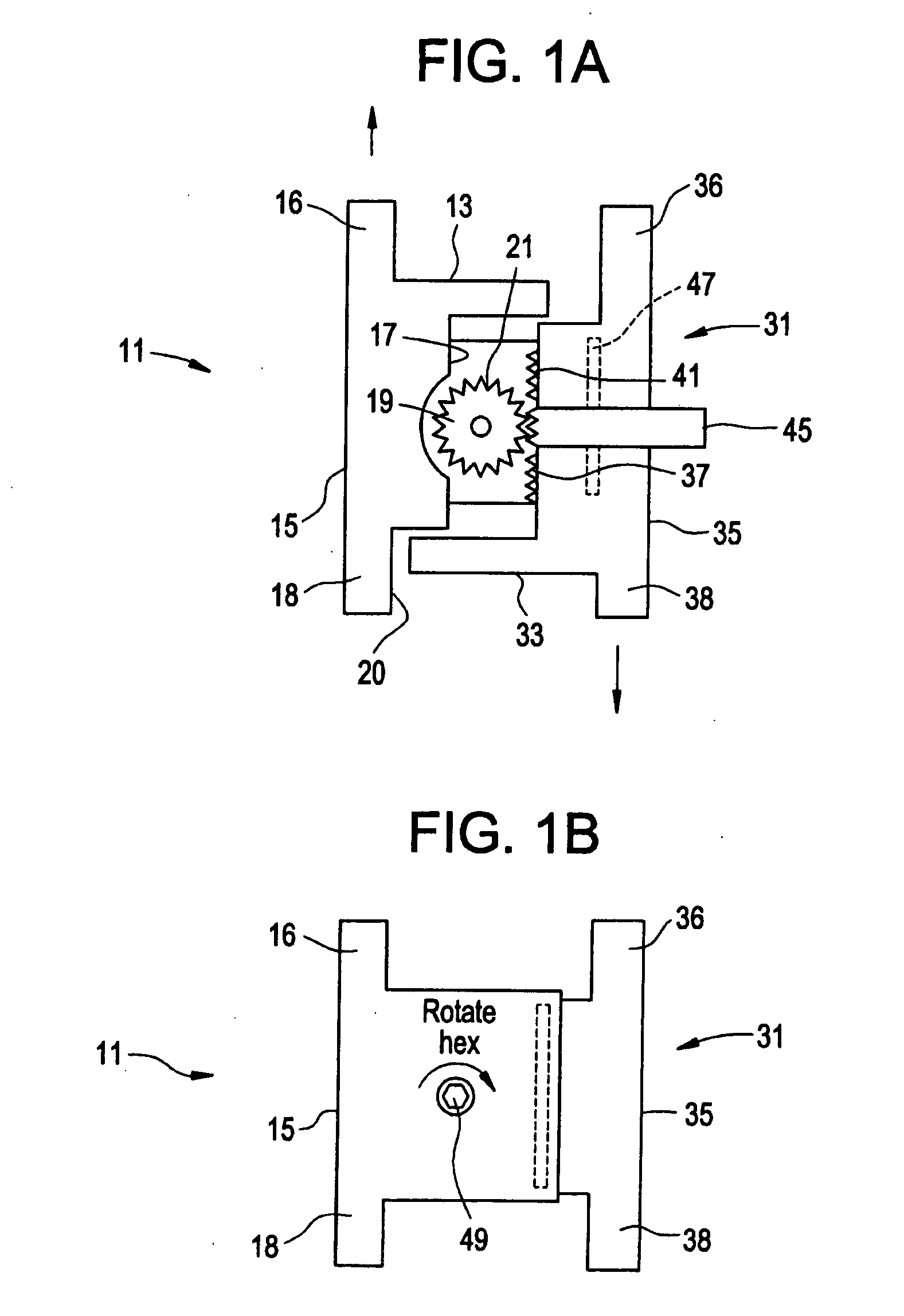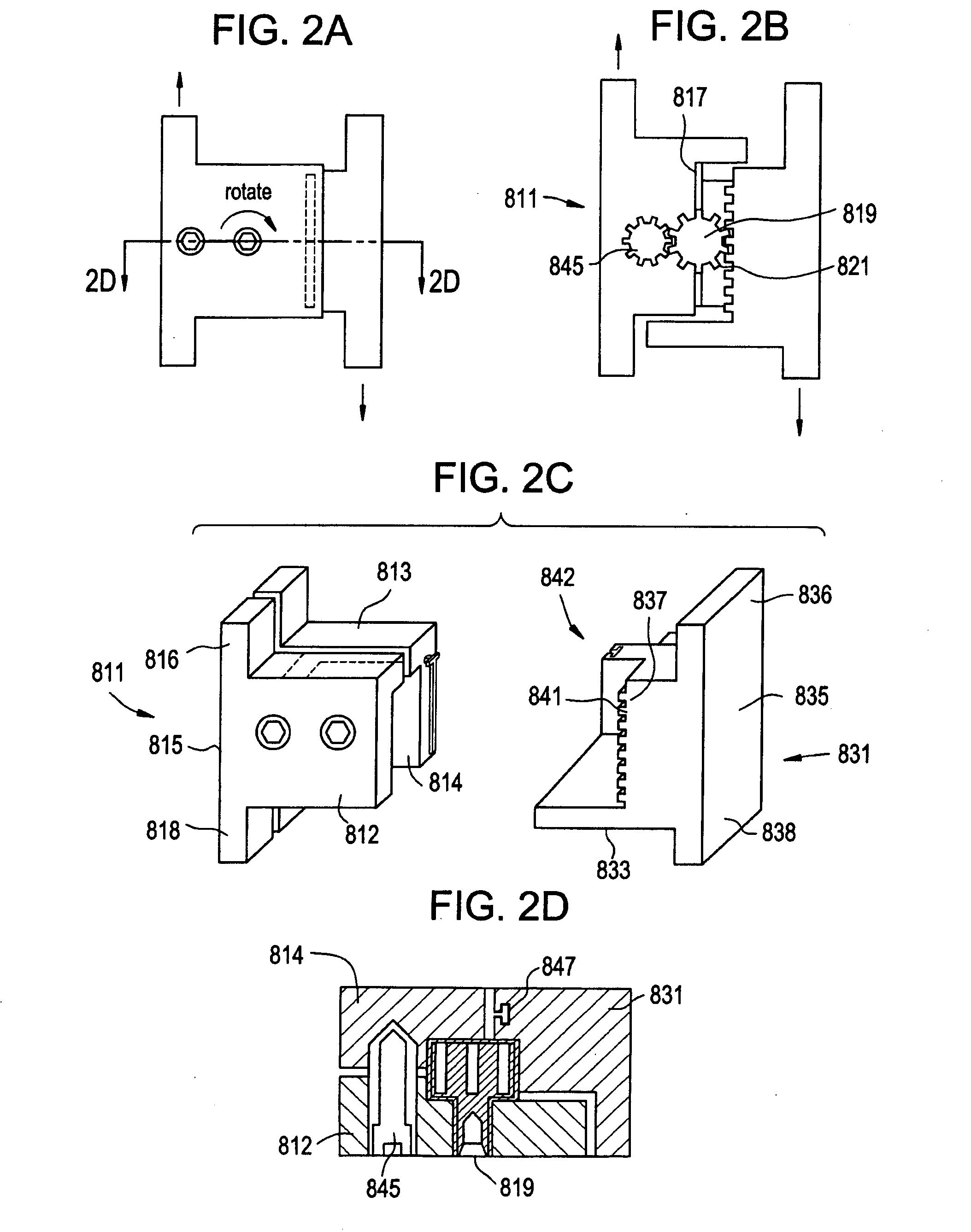Adjustable Posterior Spinal Column Positioner
a positioner and posterior spinal column technology, applied in the field of adjustable posterior spinal column positioners, can solve the problems of unbalanced axial load of anterior and posterior columns, low back pain, and pain produced by patients,
- Summary
- Abstract
- Description
- Claims
- Application Information
AI Technical Summary
Benefits of technology
Problems solved by technology
Method used
Image
Examples
Embodiment Construction
[0036] Referring now to FIGS. 1a and 1b, there is provided an interspinous implant 1 for insertion into an interspinous space between a first and second spinous process, the implant comprising: [0037] a) a first body 11 having: [0038] i. an upper bearing surface 13 for bearing against a first spinous process, [0039] ii. an outer side surface 15 having upper 16 and lower 18 extensions extending therefrom in the axial direction, [0040] iii. an inner surface 17, [0041] iv. a gear 19 attached to the inner surface and having a first set of teeth 21, [0042] b) a second body 31 having: [0043] i. a lower bearing surface 33 for bearing against a second spinous process, [0044] ii. an outer side surface 35 having upper 36 and lower 38 extensions extending therefrom in the axial direction, and [0045] iii. an inner surface 37 having a second set of teeth 41
wherein the upper surface and the lower bearing surfaces define a height of the implant, and
wherein the sets of teeth cooperate such that,...
PUM
 Login to View More
Login to View More Abstract
Description
Claims
Application Information
 Login to View More
Login to View More - R&D
- Intellectual Property
- Life Sciences
- Materials
- Tech Scout
- Unparalleled Data Quality
- Higher Quality Content
- 60% Fewer Hallucinations
Browse by: Latest US Patents, China's latest patents, Technical Efficacy Thesaurus, Application Domain, Technology Topic, Popular Technical Reports.
© 2025 PatSnap. All rights reserved.Legal|Privacy policy|Modern Slavery Act Transparency Statement|Sitemap|About US| Contact US: help@patsnap.com



